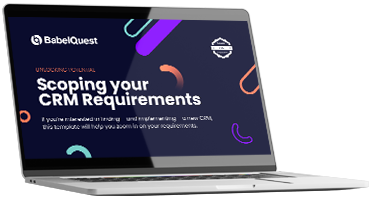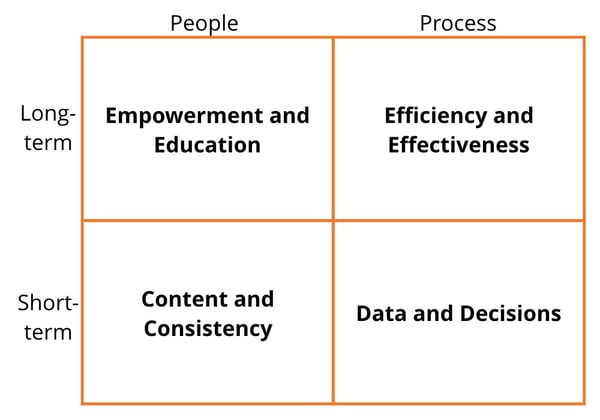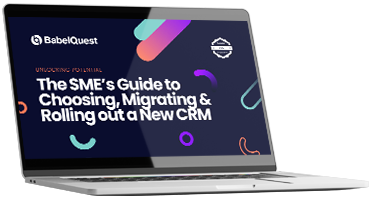Drive measurable results and transform your sales function with sales enablement
‘Leads that close.’
Rewind eight years to a small pub in Bracknell and you’d overhear a business development director and the business unit director use these exact words while they discussed the challenges facing their sales function.
You see, their sales team had a problem that everyone seemed to be ignoring. That problem was an inability to predictably and repeatedly close new revenue.
Nobody was paying attention to what the buyers wanted, so they hadn’t realised that the way their customers were buying had changed. With the internet at their fingertips, the company’s target buyers had moved from being information-poor to attention-poor. And as a result, they increasingly perceived the company’s traditional sales techniques (and its salespeople) as interruptive, manipulative, and pushy.
Marketing would claim one percent conversion rates were successful, sales reps couldn’t get hold of prospects even when they’d advanced through the sales process, and forecasting had become a joke at which no one was laughing.
Between them, they were charged with identifying business opportunities and building the long-term relationships needed to maximise profits. But leads weren’t closing, resulting in time inefficiencies, wasted funds, zero accountability, and, ultimately, loss of revenue.
From this shared frustration, and the realisation that they could fix it, this couple left the company and started a business of their own together. That couple was Eric and Becky Murphy, and the business was BabelQuest.
BabelQuest was one of the first UK agencies to proactively explore and execute on the market for sales enablement services. They have since excelled in the space, driving measurable results and providing additional value for their clients. It’s great to see them achieve HubSpot Diamond status as one of our premier partners in the UK.
Aidan O'Leary, Senior Sales Manager, HubSpot International Partner Programme
In the eight years since making this decision, Eric, Becky, and the BabelQuest team have helped companies ranging from startups to enterprise level transform the functionality and profitability of their sales departments. We were one of the first UK agencies to proactively execute on the sales enablement market and we have since excelled in the space, driving measurable results for our clients across a range of industries by enabling them to maximise the time that sales actually spends selling and ensuring that they’re as effective at this task as possible.
The term ‘sales enablement’ covers the technology, processes, content and training that empowers sales teams to sell more efficiently. In 2016, our sales enablement services helped IT reseller LAN3 generate £1.2 million in quoted deals over a five-month period, earning us the HubSpot Grand Prize for Sales Enablement. A year later we were awarded a HubSpot Impact Award for our work with The Dealer App, generating 7,000 active users — a 250 percent increase — over five months.
Our sales enablement book is the product of our experience using sales enablement to help our clients’ sales functions to overcome today’s challenges and close new revenue through selling more by:
- Aligning sales with marketing and services
- Implementing an inbound approach to sales
- Fixing the challenges to your people and process
Packed with relatable stories, practical guides, real-life examples, and helpful templates, we hope you can use it to achieve the same.
Download your copy of the sales enablement book now.






